I dropped my pack and found a spot to sit. Scanning the temperate rainforest around me, I felt at home. After a period of absence from my “home forests” of the Central Highland of Victoria (just over an hour from home), I was particularly aware of the smells, sounds and light of the forest. I felt open to the forest around me. Even flicking off the leach crawling up my trouser leg had the comforting feel of the familiar.
Just a few days before, I had been in a completely different forest – the tropical rainforest of Penang, Malaysia.
I will say from the outset; I am not comparing the quality of the images. A few shots taken on a family holiday in a new location in the bright sunshine of the middle of the day (glorious weather for a family holiday) cannot compare with a body of work involving over 100 visits over multiple years. I was exploring these forests in conditions I wouldn’t bother going out in closer to home.
This post is more a reflection on how I engaged in a very different forest. I have been thinking about this for two reasons. Firstly, I feel that building an intimate knowledge of an area helps to photograph it. This has been core to my approach to landscape photography.
Secondly, for several years I have had a vague plan to build my skills in woodland photography in the forests near home and then explore some of the great forests of the world using these skills. I find forests the most amazing of ecosystems and would love to explore and photograph different forests around the world.
This was not the wilderness experience I so enjoy in my home forests. As is common in many parts of the world, the forests of Penang are fragmented and the relatively dense population intrudes into nature. The signs of people and infrastructure intrude into the forest, at least in the tourist areas I visited in Penang (there are far larger tracts such as the Taman Negara National Park, the first and largest national park in Peninsular Malaysia, or on the island of Borneo, but these were beyond a 10-day family holiday).
The other obvious difference was the humidity. While both Penang and Melbourne often have maximum temperatures above 30 degrees Celius at this time of the year, the humidity is often exceeded 85% in Malaysia – so most of the time I was an uncomfortable pool of sweat.
Despite the different conditions, it did not take long to get in the flow of searching the forest for compositions that could work. These can be patterns in the foliage, a subtle subject I would be able to accentuate in processing, using a path or watercourse to create leading lines or paths of light to lead the eye.
As I would often do at home in these harsh conditions, I was switching to black and white through my EVF to visualise the tonal qualities. Sometimes using a circular polariser to reduce glare and enhance saturation. Here I was trying to make sense of a chaotic forest of the most amazing biodiversity by exploring the three components of composition – drawing, tonal and colour.
What became clear to me, as I walked through these magnificent forests, was that I didn’t really understand what is going on. In my home forests, I know most of the species and how they work together. I understand the subtle changes in their relationships - how the mix of ground cover changes as you climb out of a river valley, for example.
In this tropical rainforest, I had none of that. I knew some of the trees, but I really didn’t understand the relationships between species, the subtle changing of ecosystems or the relationship between vegetation and the land. Indeed, I had a slight sense of unease in the dark depths of an unknown forest. Largely, the forest was a mass of greens (and even the greens were a bit different - more blue-green than yellow-green).
“The land is like poetry: it is inexplicably coherent, it is transcendent in its meaning, and it has the power to elevate a consideration of human life.”
- Barry Lopez, Arctic Dream
Like some poetry, I couldn’t read the land. I like the use of the word “coherent”, meaning both ‘forming a unified whole’ but also ‘logical and consistent”. I value understanding the system. Coherence is in the view of the receiver, the audience – for me, the Malaysian rainforest did not feel coherent because I didn’t understand it.
One of the challenges in critiquing your own images is separating the experience of taking them with the content of just the image. Initially, I was not happy with these photos because the experience of making them reflected my lack of engagement with the forest. My lack of time and understanding of the forest meant it felt rushed and superficial.
Over the past couple of weeks, however, I have become more comfortable with the photos, especially considering the limited time in the forest. I feel much more confident that the approaches and techniques that I like using at home will also work as I wander around a completely different type of forest taking photos of whatever catches my eye.
I am not trying to collate and document the rainforest like a botanist’s drawing. I want to capture in images what it felt like to be there, or provide an insight into some deeper (transcendent) meaning.
By this measure, the black and white patterns of foliage and the tree portraits are pretty straight forward photographs of a subject. They reflect what attracted my attention but they lack the special subject, light and/or atmosphere required to lift them or tell a story. They are nice and helped get “in the flow” - perhaps they are the images that I needed to make to move forward?
The two images above are the most interesting and were taken later in the trip. These are less about a subject, but rather they map the landscape. I think they emphasize my lack of ease by creating a sense of the claustrophobic chaos of the jungle. I had to work hard to manage the bright highlights and still provide a sense of depth, but I hope it gives an idea of what it was like to be there.
As I sat in my home forest, thinking about future travel and possible new forests to photograph, I reflected on the need for time to be able to search out the subjects and compositions that reflect what is special about a forest. There is nothing like time in field to be able to understand the nuance of colour and light and to be ready when just the right conditions happen.
All travel is superficial, it is impossible to understand what it is like to be a local. That is not what I bring to these tropical forests. However, to go beyond the straight forward documentary images, to start to understand a place, requires moving beyond the unease of a new place and being comfortable exploring and simply sitting in quiet contemplation to be able to have something worthwhile to say.


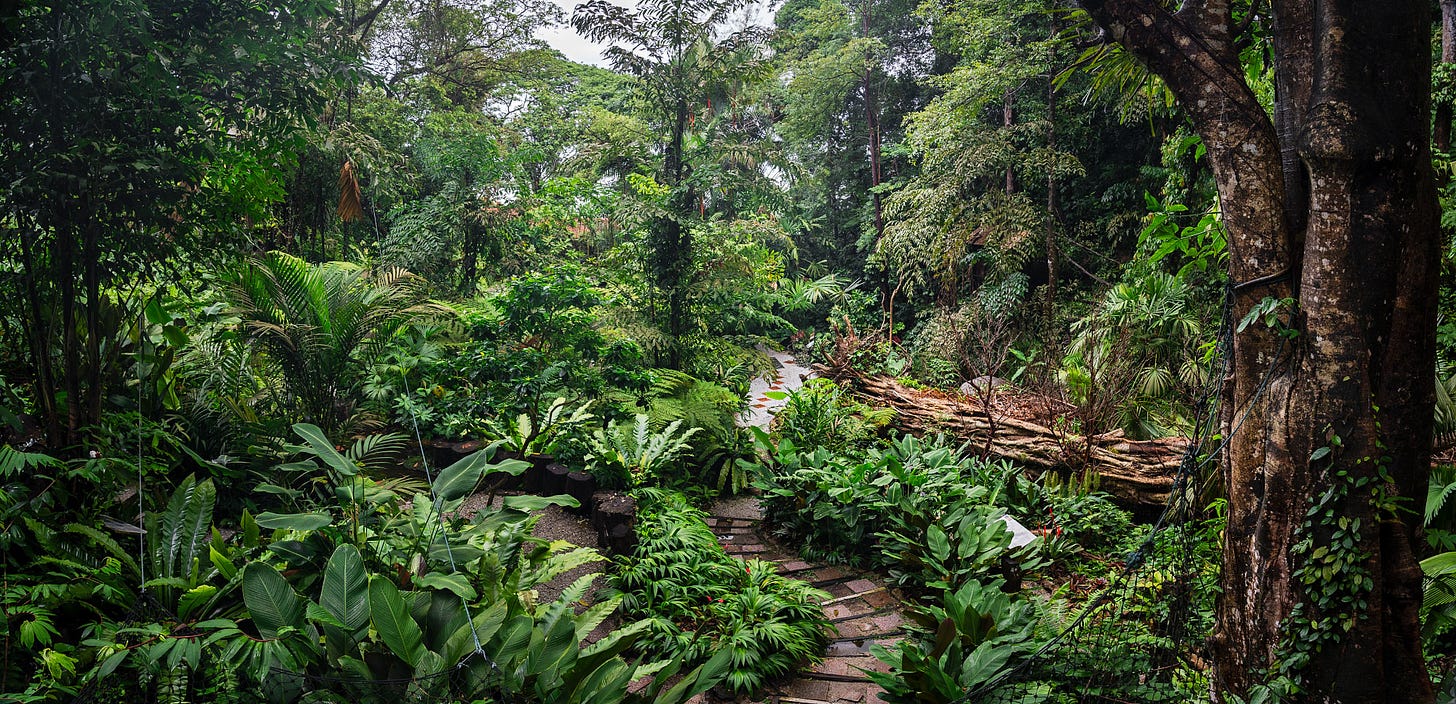
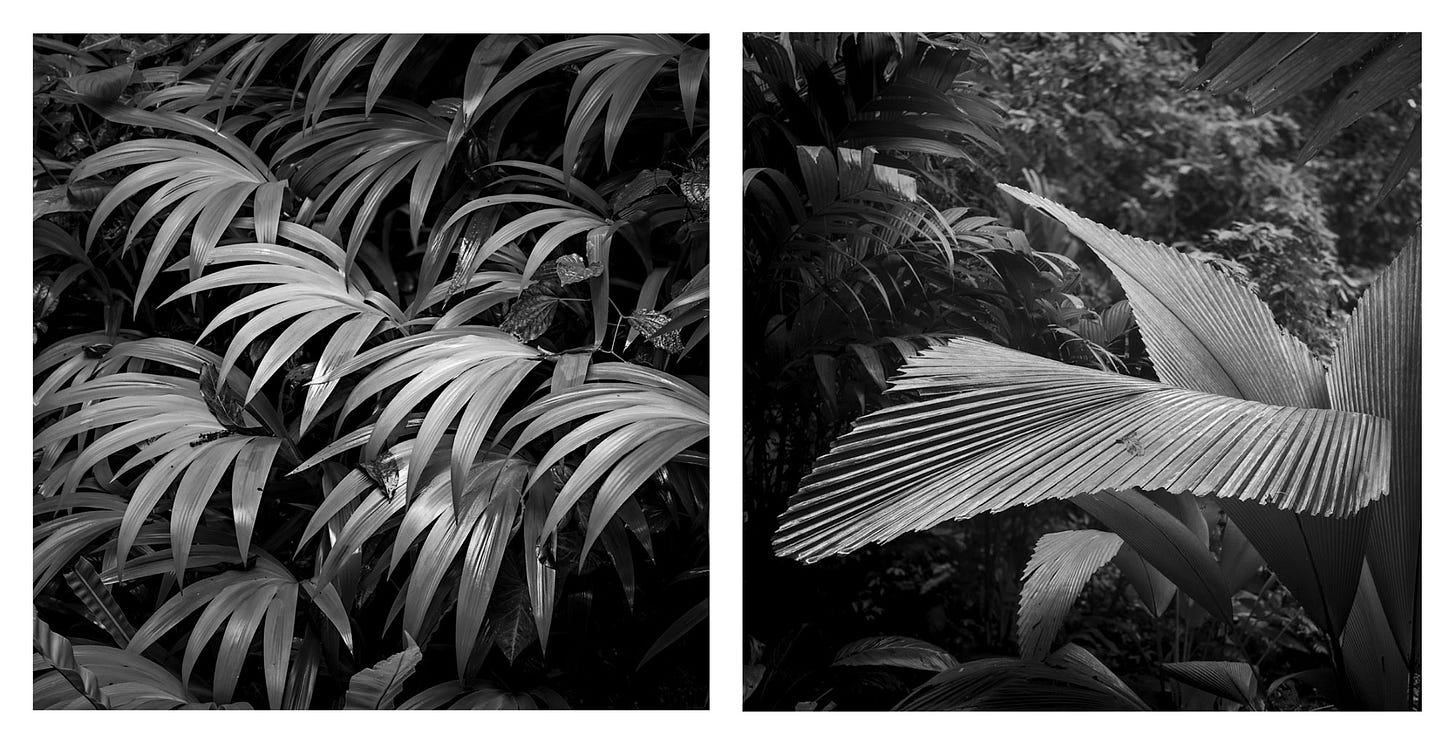
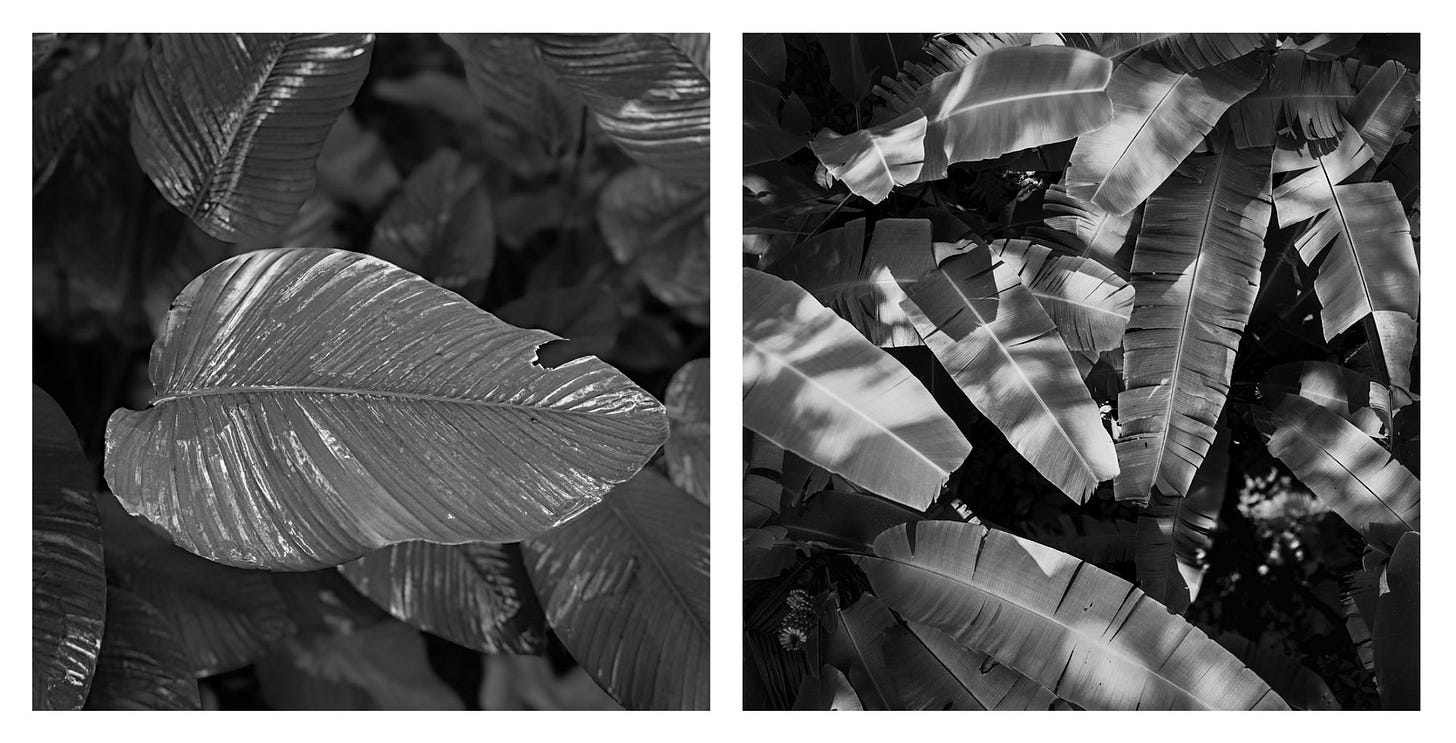
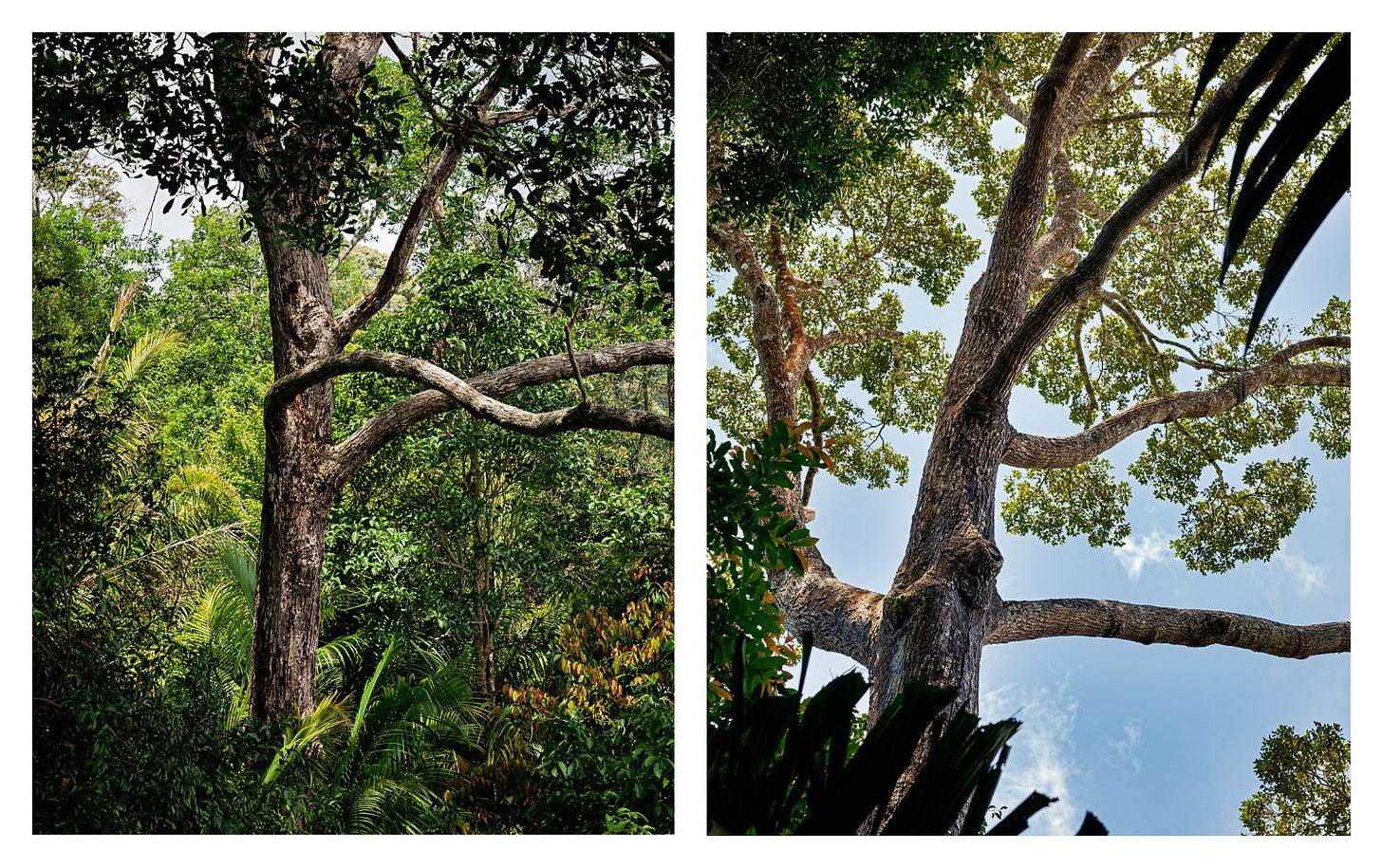
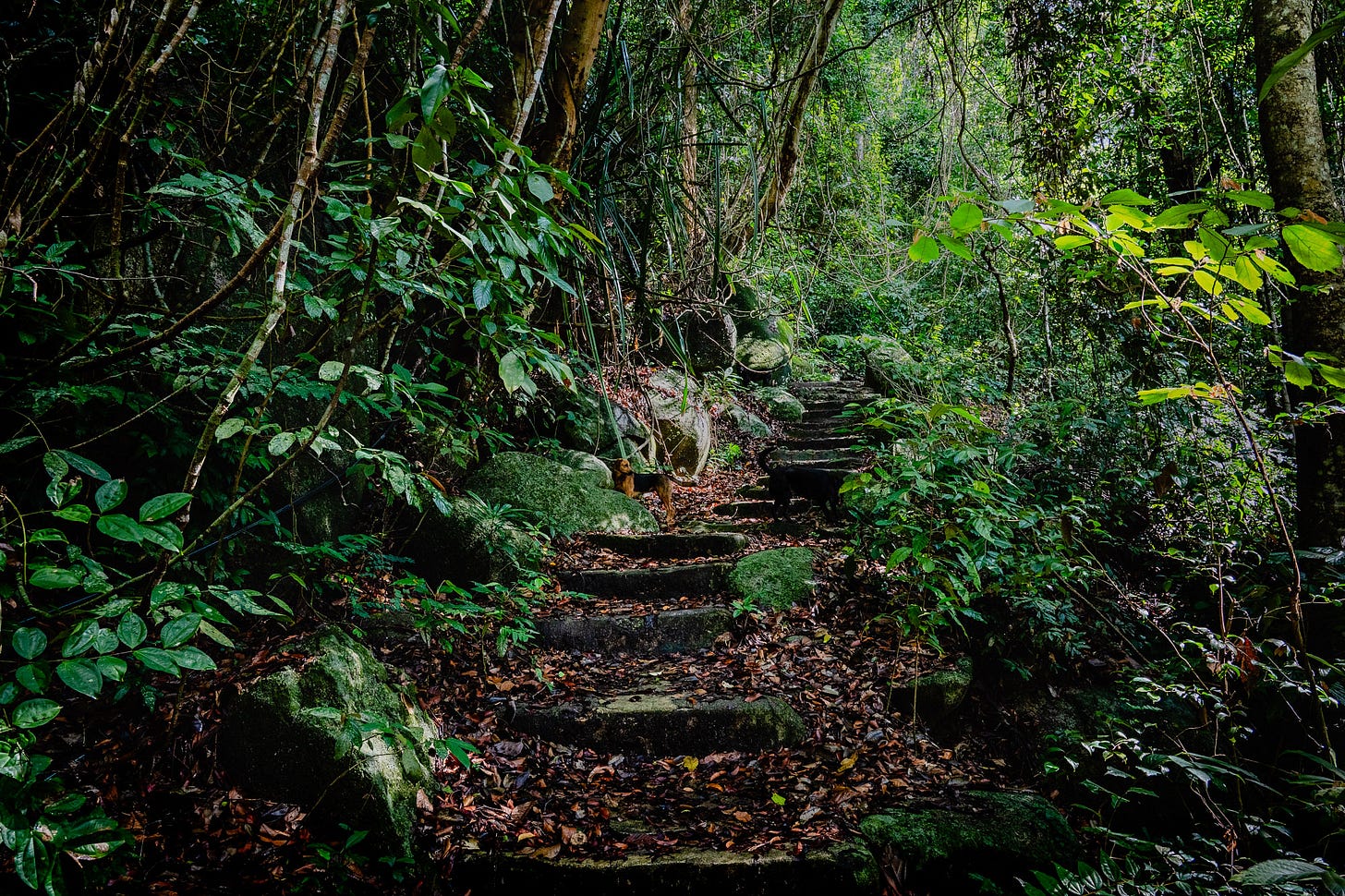
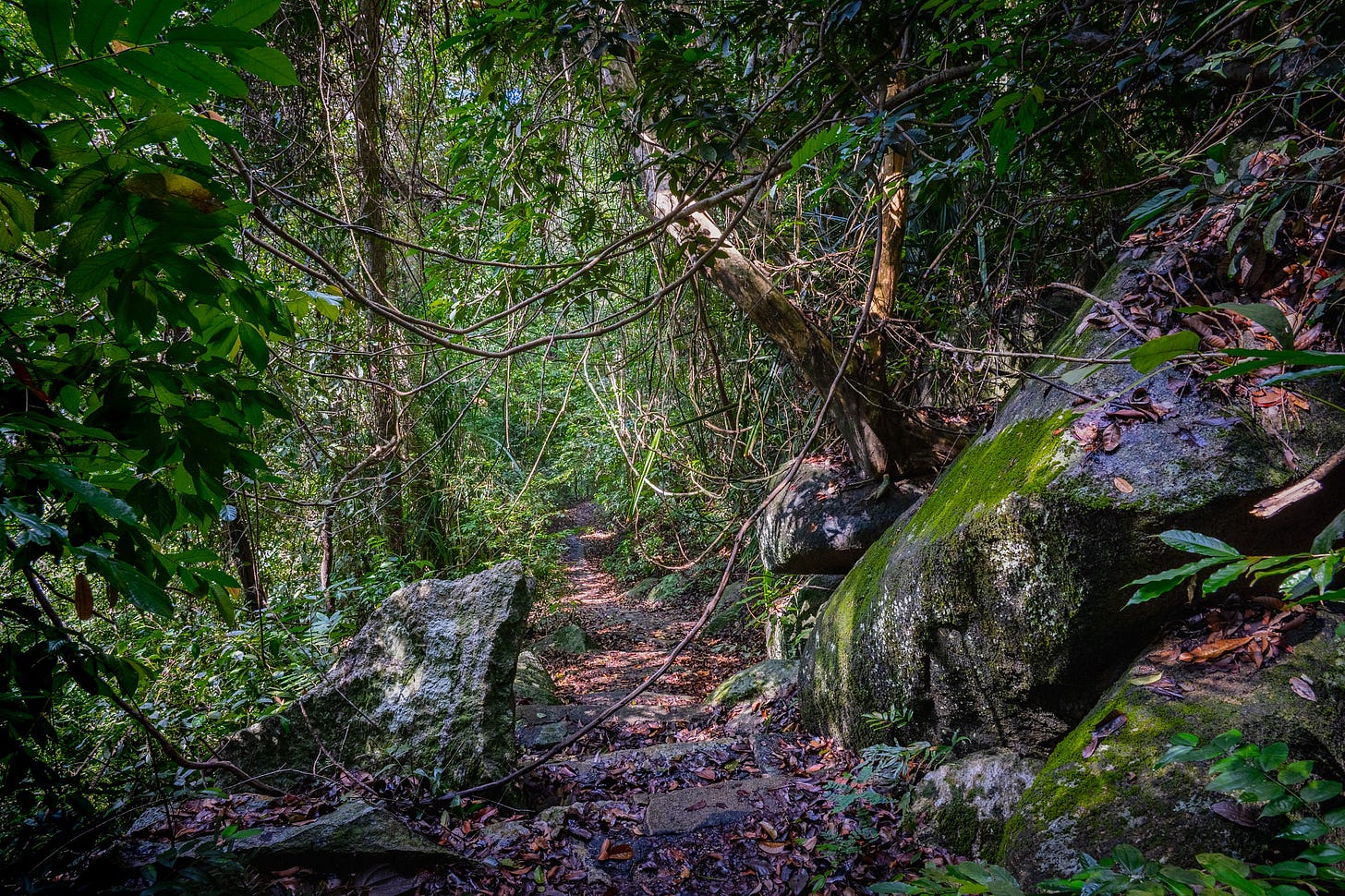
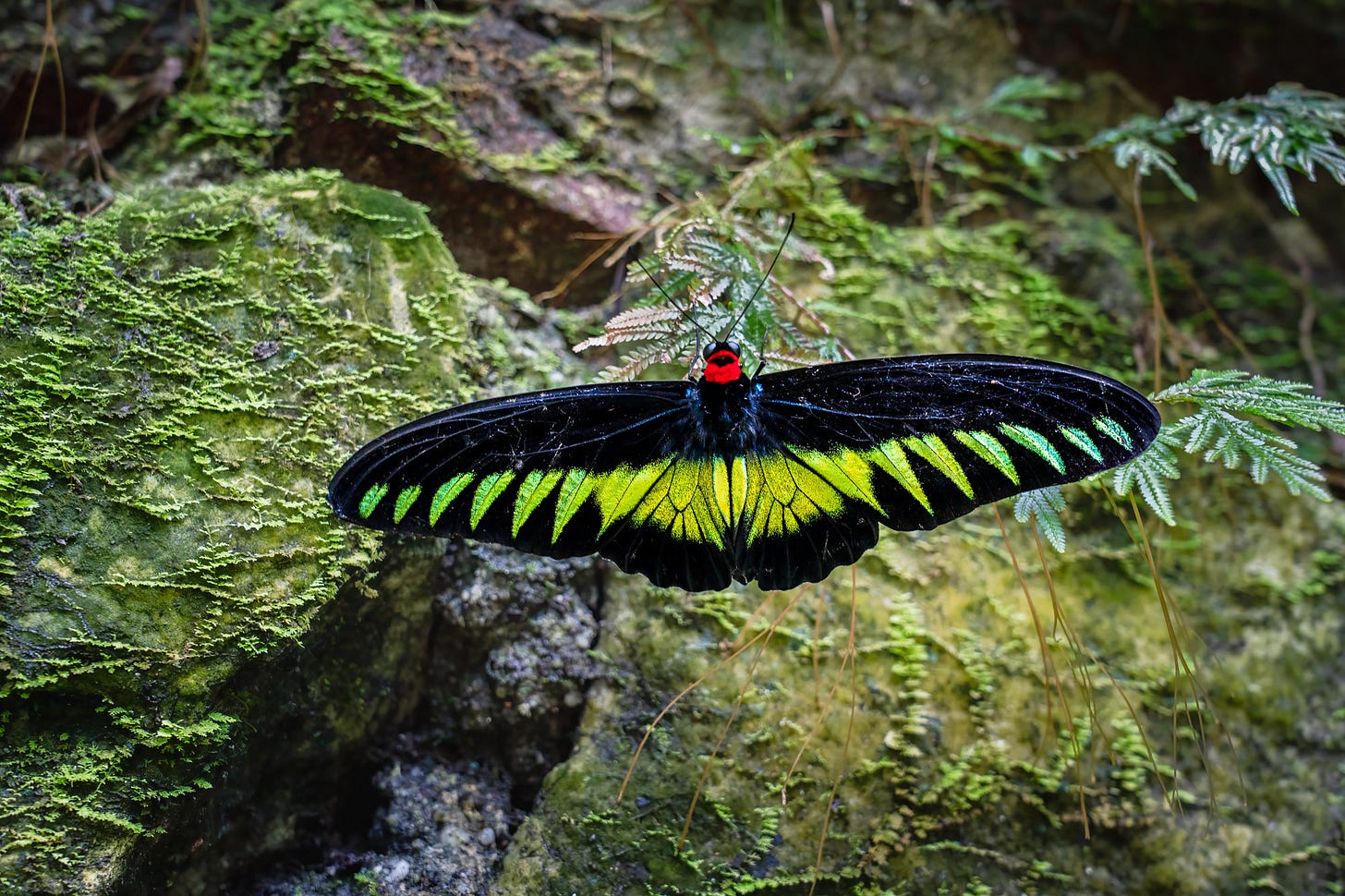
Have you spent any/much time in Australia's tropical or subtropical rainforests? I think the temperate-subtropical-tropical transition there is fascinating, maybe because you don't really find it anywhere else in the world (the temperate part is usually on the west coast!). If you have I'm curious where it starts to feel less like "home" to you - over my relatively brief time there I do remember the temperate rainforests feeling really distinct, without as much contrast between subtropical and tropical.
You have my sympathies with the humidity. I was in Borneo in March to visit my brother and he took me to see Niah Caves; by the time we got back to the car, I could have been wrung out like a dishcloth! I haven't experienced anything like it. Essentially no photography as it was a family trip. I hope you get back to Penang to do some more photography. You did a pretty good job in conveying its sense. Maybe you're being too harsh on yourself?